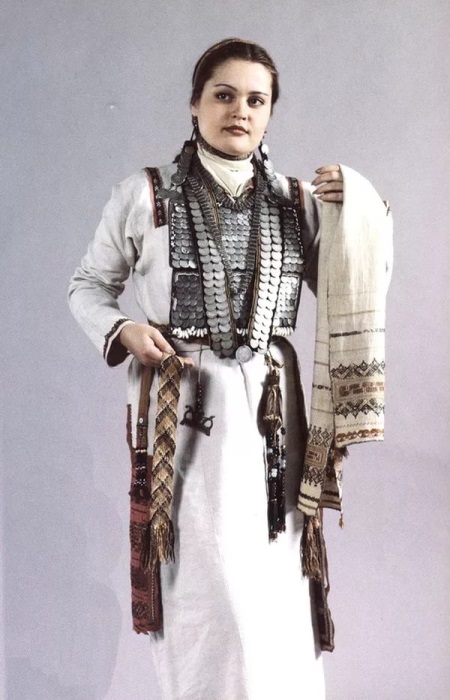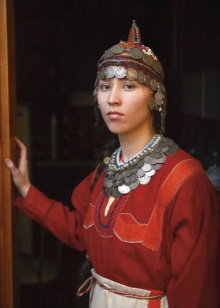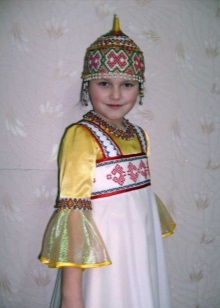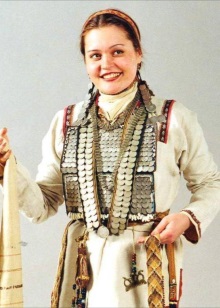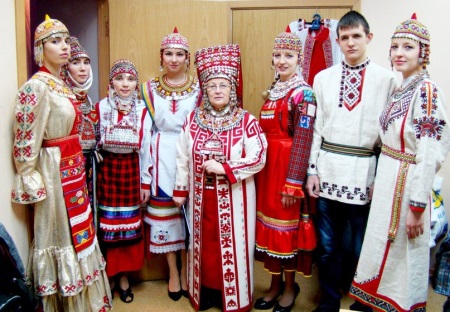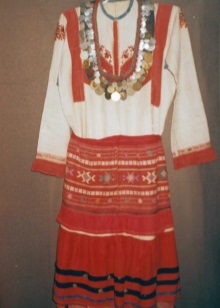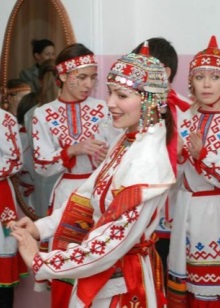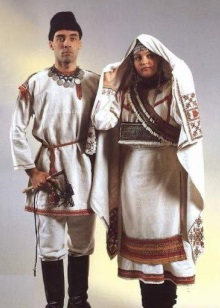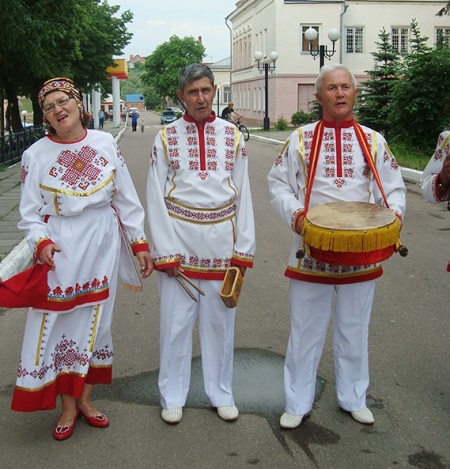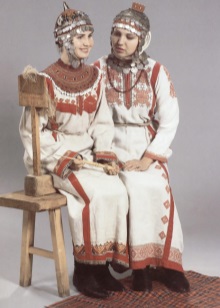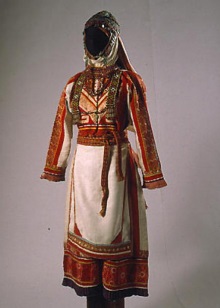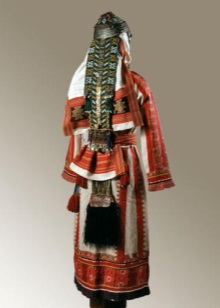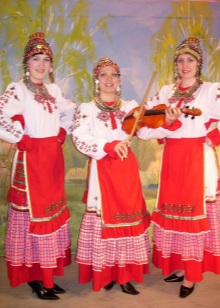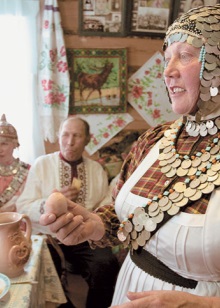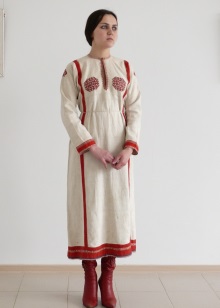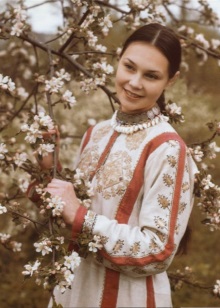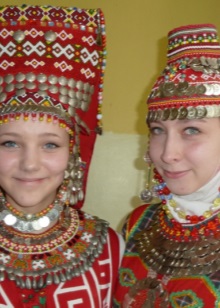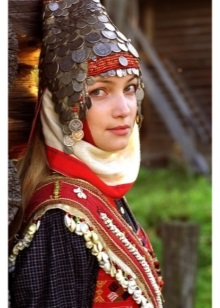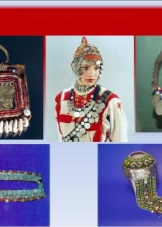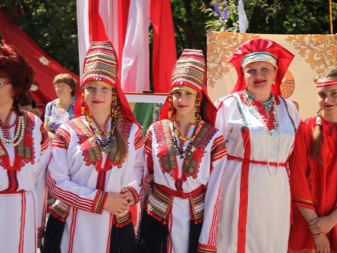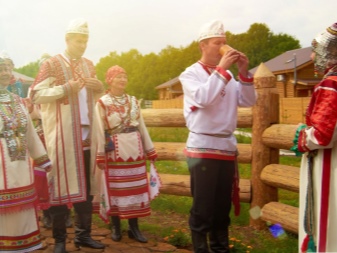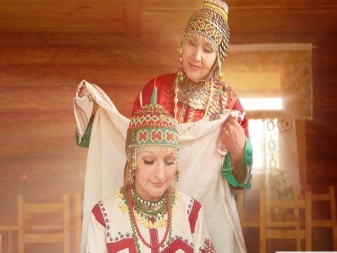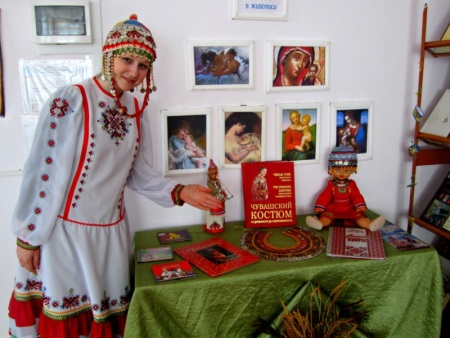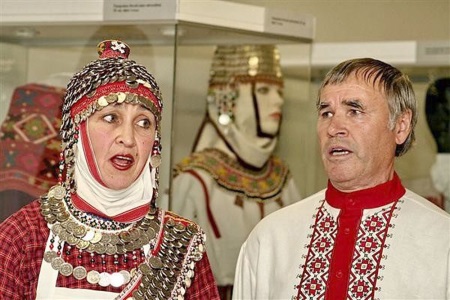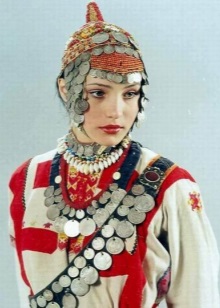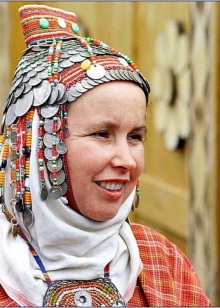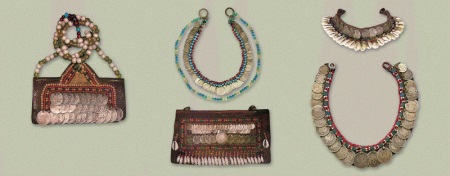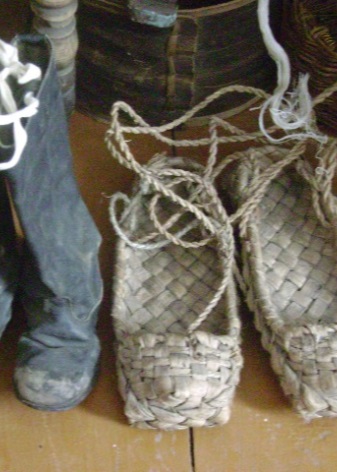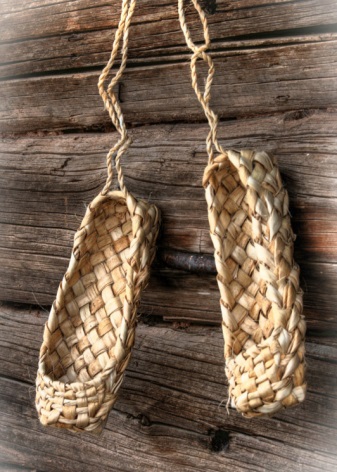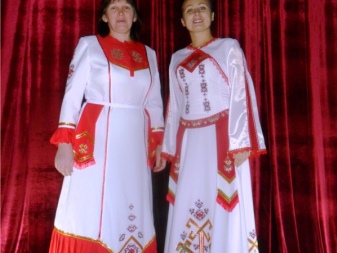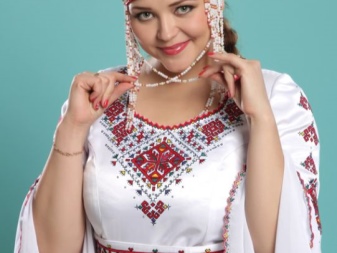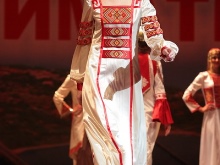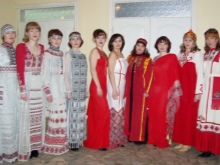The history of the Chuvash folk costume
The formation of the Chuvash folk costume took place under the influence of the place where the Chuvash lived, who took over many of the little things and the details of the clothes of the nearest neighbors. Traditional outfits of the viryal (they are the supreme Chuvash) from the Cheboksary region quite strongly resembled the costumes of the Finno-Ugric people of Russia with their simplicity and moderate design elements.
The grass-roots Chuvash, they are the same antars, used different ruffles during the tailoring of dresses and costumes, and the color of the apron was saturated red. Towels and aprons had an unusual embroidery with colored threads of various shades. Suits, dresses, breastplates and headdresses of the Chuvash of the Samara region have many similarities with the Mordovian national costumes.
Materials Chuvash costumes
Quite a long time Chuvash engaged in the manufacture of fabrics and various natural dyes on their own. To dye yarn, it was necessary to spend a lot of time, because of which the main color of the suits and dresses was an ordinary white color.
Soon the antars acquired aniline dyes, which greatly facilitated the process of dyeing the yarn, and this gave impetus to the development of the production of such material as pestryad. Then the clothes from the pestle were replaced with ordinary white suits. Viryals did not use the pestle at all in the manufacture of clothes and dresses.
Costume colors
The white color personified purity and was the main one in traditional costumes and chuvash dresses. A fresh white shirt was worn for various holidays and festivities. Often, the basic white color was combined with rich red, which also symbolized purity, holiness and life, therefore almost all the seams of suits and dresses were covered with red tape.
For the manufacture of clothing, the Chuvash used a special fabric made from threads of different colors (this fabric was called pestryad) and in dresses and shirts made of such material began to dress up both for various celebrations and for ordinary work in the field. The older generation was extremely dissatisfied and worried about this, because of which a categorical ban on garments made of patchwork sometimes came into effect, and in case of violation of this rule, the offender poured 41 buckets of ice-cold water.
Design outfits
A white shirt (aka kepe) was an essential element of both women's and men's national costume. The design of the shirt was rather simple: a hemp canvas was formed, and wedges were sewn into the sides, which widened the shirt at the bottom. Shirts for women's suits were made with a length of 120 cm and a notch in the center on the chest. Men's shirts had similar cuts on the sides.
Men's suits
Initially, Chuvash shirts with a belt for men were made free and long (up to the knees). Men's clothes had a variety of rich and festive embroidery, appliqués and silk patterns, while the simple costumes, not intended for the holidays, were quite laconic and strict and no patterns were put on them.
In the distant past, men were required to wear clean white shirts to conduct pagan rituals.With the development of new technologies, the Chuvash folk costume for men acquired a collar and became more modern, with smooth lines of round armholes. Men's kaftans and headwear intended for various holidays were richly decorated in the chest and collar area, as well as along the edges of clothing.
Women's costumes
Chuvash traditional shirts for married women had rather complicated embroidery of unusual shape, while the hem with geometric stripes and stripes was distinguished by modesty and simplicity. During the holidays and ordinary weekdays, women wore special material with fringes, patterns and stripes on their thighs, made of silk and wool threads.
Unmarried girls wore modest outfits without embroidery and patterns, so as not to distract attention from their own beauty.
Women's jewelry with beads
Jewelry complexes with silver coins, bead details and expensive stones are:
- women’s hats;
- outfits for the neck and chest (in Chuvash, they are called ama, alka, may);
- bracelets and rings (they are sul and sulfur);
- small mirror, which is mounted on the belt (Toker);
- belt wallet (enchenok)
- suspensions on the belt (jes hure).
Wedding suit
Chuvash attire for the wedding had the following interesting details:
- the bride's dress was decorated with beads, shells and coins, creating a large and complex pattern, complemented by a special headdress;
- the bride's shirt, apron and outerwear were decorated with chic embroidery; in addition, the girl wore rings, bracelets, pendants and a wallet with a small mirror on her belt (it is worth noting that this outfit weighed about 16 kg.);
- the Chuvash wedding costume had one important detail, such as - a perchenchek (large white material or a bedspread) with rich embroideries along the edges, under which the bride stayed for a certain time, after which the veil was removed and the girl was dressed as a married woman;
- the groom dressed up in a shirt and a caftan with a wide color belt, and also put on gloves, boots and a fur cap with a coin in the forehead area.
Children's suits
Children's Chuvash folk costumes were notable for the richness and luxury of embroidery. The clothes for the girls were fairly simple and were decorated with braid or simple patterns that were sewn on the hem. The head was covered with ordinary beaded ornaments and braid. Older girls wore bead jewelery that was attached to the belt from the back.
Suits for small men were quite simple and differed only in bright patterns on the collar.
Women's hats and bedspreads
In ancient times, women's Chuvash hats were represented by caps and bedspreads.
Surpans (headbands) of various lengths, turban, shawls and bridesmaids, which were intended exclusively for married women, belonged to bedspreads.
The long or short (with narrower patterns) of the bottom Chuvash surp completely covered his head, and its edges were generously embroidered and decorated with patterned stripes, ornaments and laces. The surpans of the Chuvash uplifts were rather short and were decorated with embroidery on both sides, representing interesting ornaments embroidered with tiers, as well as with fringe and beads at the ends. Headgear and headbands differed quite strongly in groups.
Jewelry amulets
In the rich national costume Chuvashka has a lot of small, but quite important details and ornaments, indicating the identity, age and social status of women.
Numerous ornaments of women's dresses (coins, shells, beads) are primarily protected from evil spirits, enemies and various dangers. For holidays or weddings, chuvashki wore a full set of jewelry amulets, which weighed more than 10 kg.
Footwear
In the summer season, Chuvash men and women wore sandals.These shoes were woven in various and rather cunning ways, which is why some models have survived to the present day and are currently in the museum. With bast shoes they put on comfortable cloth gaiters. When winter came, the Chuvash cleaned bast shoes and put on warm boots, without which it was simply impossible to do.
At the end of the 19th century, it was a tradition to give a wedding for leather boots to sons and leather shoes for her daughter, who subsequently donned extremely rarely and very much cherished.
Modern fashion of Chuvashia
At present, the traditional national costume of the Chuvash has lost its relevance and only in some villages and villages do Chuvash dresses be worn during holidays or ceremonies.
The national costume is often used during various concerts and performances of folk groups. Fashion designers no longer rely on traditional costumes and shirts in their designs, but use some similar images in their attempts to produce all the details of folk ornaments, ornaments and patterns.

